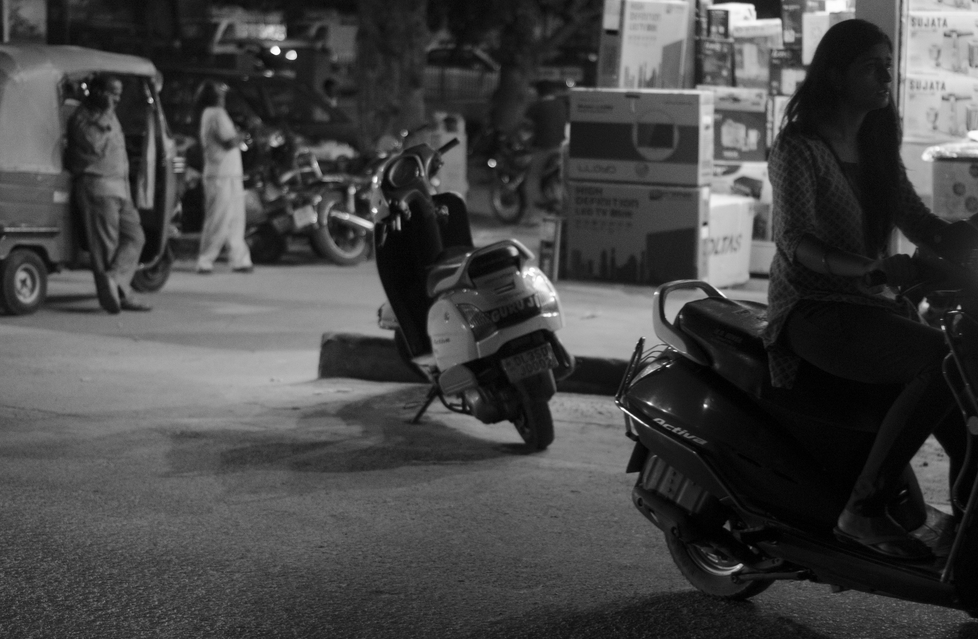Given how photographs have changed the course of world events, and lately influenced a lot of journalism, it’s darker side is something we cannot afford to ignore.
Pace and movement are two aspects that often set the tone for this very lucid form of photography. Ansel Adams said, ‘there are always two people in a picture: the photographer and the viewer.’ But such is not the case when it comes to photographing on the streets – there are many others whom you capture in the frame, and with them, their complexities.
Perhaps one of the major dilemmas is how to photograph the streets and it’s people (who give it character) without offending them. For many photographers, it’s a choice that they make. They’re risk-takers, ready to address any subject who creates a big deal about being photographed. On the other hand, there are those who simply want to go unnoticed when clicking. For some of them, that adds to the spontaneity of the moment while for others, it’s about being in a comfort zone and avoiding confronting situations with the subjects.
Another is about what’s ‘ethically correct’ in street photography. Would capturing a half-naked human belonging to either sex, differently abled and begging on the streets, be perfectly fine a frame to shoot? As a photographer, it’s often a moral choice, like for Eric kim. He acknowledges being uncomfortable photographing the poor and destitute. And then there are those who take it as professionally as can be. It’s just another subject for them and they have to capture the sight ‘as is’. Culturally too, since the reading of photographs can differ, it becomes a separate challenge altogether.
Additionally, it is the challenge of time. In the streets, the approach can hardly be planned, owing to the fast-pace it aims to capture in a still. Some photographer’s believe strongly in their ability to recognize when everything is ‘just right’. For them, it’s then up to the people who view the photographic result to decide whether or not what they shot was right – entirely a subjective view.
Here’s what often works in a world where public and private lines are fast diminishing:
Moving around.
Loiter around with a camera in your hands and people are bound to notice you. Once they do, it’s almost a choice they make. Read their body language and see if they establish eye contact. Picking up the right signals from them can help figure if they’re keen on engaging with you, or prefer to have their privacy.
Take the shot, anyway.
You’re unsure a taking a shot? Often, our conscience takes over the work. Capture it anyway. Get it back home and discuss, ponder upon it. Get a few close friends, or people you think will honestly and critically review your work. Take a call on making the photograph pubic based on a larger opinions. It’s not always possible to be sure what right – or wrong – simply because there it’s all really grey! Yet, if you’re unsure, this could be a great way to go about it. Do check for country-specific laws on photography and street photography in specific.
Shoot, Quick!
In order to avoid stressful or unpleasant situations, hone up the speed at which you take shots on the street. Click and be gone with a flash. Successive, quick snaps without having to hide can get greatly candid photos. People honestly aren’t there for you to click them from a million angles – it can be as frustrating for you on the streets as for them! Besides, it’s a public place and you’re not doing anything illegal. But just do your job, click a few shots, get back home and ponder on the results later!
Also checkout this article on Photographertouch for more information.
Verdict
It seems that either sides can come up with a balanced, to-each-his-own kind of arguments. There is no rule on the streets: the chaos, the randomness of the streets does not allow you to be orderly or even think about what’s ethical or what’s not. What’s private, is increasingly public. There are only things you can try, and see if they work. Getting comfortable with crowds, understanding crowd behaviour and predicting how they might react are perhaps the best ways to delve into the darker side of street photography.


